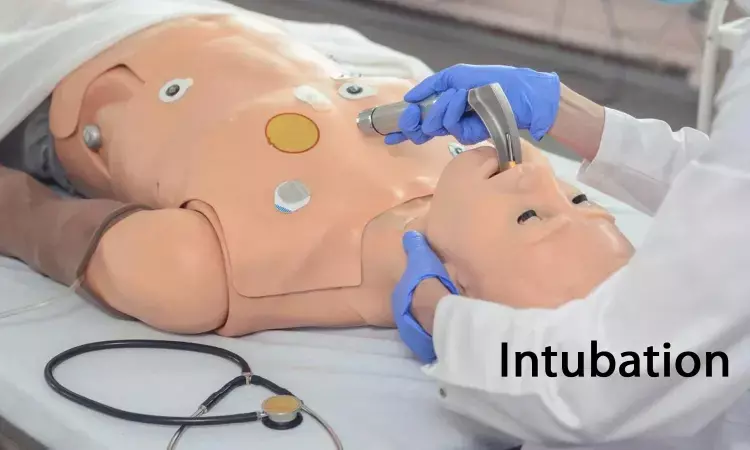- Home
- Medical news & Guidelines
- Anesthesiology
- Cardiology and CTVS
- Critical Care
- Dentistry
- Dermatology
- Diabetes and Endocrinology
- ENT
- Gastroenterology
- Medicine
- Nephrology
- Neurology
- Obstretics-Gynaecology
- Oncology
- Ophthalmology
- Orthopaedics
- Pediatrics-Neonatology
- Psychiatry
- Pulmonology
- Radiology
- Surgery
- Urology
- Laboratory Medicine
- Diet
- Nursing
- Paramedical
- Physiotherapy
- Health news
- Fact Check
- Bone Health Fact Check
- Brain Health Fact Check
- Cancer Related Fact Check
- Child Care Fact Check
- Dental and oral health fact check
- Diabetes and metabolic health fact check
- Diet and Nutrition Fact Check
- Eye and ENT Care Fact Check
- Fitness fact check
- Gut health fact check
- Heart health fact check
- Kidney health fact check
- Medical education fact check
- Men's health fact check
- Respiratory fact check
- Skin and hair care fact check
- Vaccine and Immunization fact check
- Women's health fact check
- AYUSH
- State News
- Andaman and Nicobar Islands
- Andhra Pradesh
- Arunachal Pradesh
- Assam
- Bihar
- Chandigarh
- Chattisgarh
- Dadra and Nagar Haveli
- Daman and Diu
- Delhi
- Goa
- Gujarat
- Haryana
- Himachal Pradesh
- Jammu & Kashmir
- Jharkhand
- Karnataka
- Kerala
- Ladakh
- Lakshadweep
- Madhya Pradesh
- Maharashtra
- Manipur
- Meghalaya
- Mizoram
- Nagaland
- Odisha
- Puducherry
- Punjab
- Rajasthan
- Sikkim
- Tamil Nadu
- Telangana
- Tripura
- Uttar Pradesh
- Uttrakhand
- West Bengal
- Medical Education
- Industry
Tongue-to-Oral Height Ratio: New Ultrasonographic Predictor for Difficult Laryngoscopy

Recent prospective observational study evaluated the effectiveness of ultrasonography (USG) in predicting difficult laryngoscopies through measurements of key parameters such as the tongue-to-oral height ratio (TTOHR) and anterior neck soft tissue distances. The study, involving 120 patients undergoing elective surgery under general anesthesia, focused on assessing four USG parameters: skin-to-hyoid bone distance (SHBD), skin-to-epiglottis distance (SED), skin-to-thyrohyoid membrane distance (STHMD), and TTOHR. The primary outcome was determined using modified Cormack-Lehane (CL) grading post-laryngoscopy.
### Methodology - Patients aged 18-65 years without a known difficult airway were included, while those requiring fiberoptic intubation or with altered neck anatomy were excluded. Airway USG was conducted before anesthesia by an experienced investigator, measuring the four USG parameters in a neutral neck position. Each patient's laryngoscopy was assessed and graded by an independent anesthesiologist. Statistical analysis included ROC curve analysis, multivariable logistic regression, and comparisons of various predictive models. A cutoff value for each parameter was established to optimize diagnostic performance.
### Results - Out of 120 patients, 11.6% experienced difficult laryngoscopy (DL) while 6.6% had difficult intubation (DI). SED exhibited the highest diagnostic performance with an area under the curve (AUC) of 0.95, 100% sensitivity, and 89% specificity at a cutoff of 1.87 cm. STHMD and TTOHR followed closely with AUCs of 0.94 and 0.92, respectively. Notably, TTOHR showed the highest diagnostic accuracy of 97%, indicating significant predictive value. Combining parameters into models enhanced predictive capabilities, with one model integrating TTOHR, SHBD, and STHMD emerging as the best predictor for DL.
### Limitations - The study's limitations include a relatively small and homogeneous sample size, limiting generalizability to broader populations or different ethnicities. Additionally, the measurements were conducted by a single investigator, which poses a risk of variability not assessed in the study. The dynamic nature of the tongue and the lack of evaluation of DI accuracy across a larger group further constrain the findings.
### Conclusion - Results demonstrated that USG parameters, particularly SED, STHMD, and TTOHR, are effective in predicting difficult laryngoscopy, with models leveraging these parameters significantly enhancing predictive performance in unexpected difficult airway scenarios.
Key Points
- A prospective observational study evaluated the effectiveness of ultrasonography (USG) in predicting difficult laryngoscopies by measuring parameters such as the tongue-to-oral height ratio (TTOHR) and anterior neck soft tissue distances in 120 elective surgery patients under general anesthesia.
- Key USG parameters assessed included skin-to-hyoid bone distance (SHBD), skin-to-epiglottis distance (SED), skin-to-thyrohyoid membrane distance (STHMD), and TTOHR, with the primary outcome being assessed via modified Cormack-Lehane (CL) grading post-laryngoscopy.
- The study included patients aged 18-65 years without known difficult airways, while excluding those needing fiberoptic intubation or with altered neck anatomy. Measurements were taken by an experienced investigator in a neutral neck position, and laryngoscopies were graded by an independent anesthesiologist.
- Among the 120 participants, 11.6% experienced difficult laryngoscopy (DL) and 6.6% had difficult intubation (DI). SED demonstrated the best diagnostic performance with an AUC of 0.95, achieving 100% sensitivity and 89% specificity at a cutoff of 1.87 cm, while TTOHR showed a diagnostic accuracy of 97%.
- Predictive capabilities improved by combining multiple parameters into models, with a particular model incorporating TTOHR, SHBD, and STHMD identified as the best predictor for difficult laryngoscopy (DL).
- Limitations of the study include a relatively small and homogeneous sample size, the use of a single investigator for measurements, potential variability in tongue dynamics, and the lack of evaluation of DI accuracy across a larger cohort, which may restrict the generalizability of the findings.
Reference –
Nandi S, Panda A, Mishra N, Rao PB, Srinivasan A. Evaluation of the predictive value of tongue height to oral cavity height ratio and anterior neck soft tissue measurements for difficult laryngoscopy in patients with unanticipated difficult airway: A prospective observational study. Indian J Anaesth 2025;69:918-25
MBBS, MD (Anaesthesiology), FNB (Cardiac Anaesthesiology)
Dr Monish Raut is a practicing Cardiac Anesthesiologist. He completed his MBBS at Government Medical College, Nagpur, and pursued his MD in Anesthesiology at BJ Medical College, Pune. Further specializing in Cardiac Anesthesiology, Dr Raut earned his FNB in Cardiac Anesthesiology from Sir Ganga Ram Hospital, Delhi.


